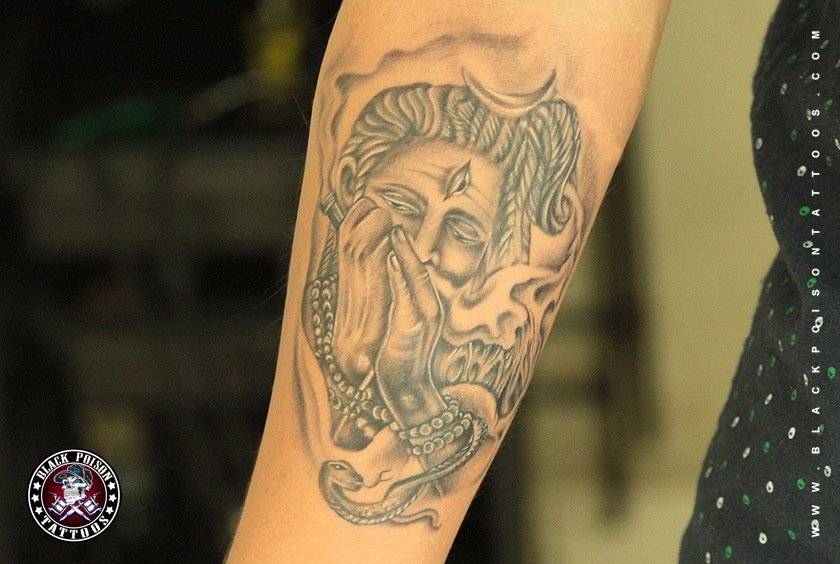Lord Shiva with Chillum Tattoo
In Hindu mythology there are various forms of meditations and different paths for yogis but Shiva represents the art of meditation in its most absolute form. In meditation, not only mind is made still but everything is dropped. In deep meditation or Samadhi, even the object of the meditation (like a mantra, Tantra or Yantra) is transformed into its formless essence, which is the essence of absoluteness and “Purna”(completeness). Thus Shiva stands for letting go everything in the world of forms. The path of Lord Shiva is undoubtedly the path of the ascetic yogi.
Forms of Shiva
Shiva has different forms: The first being Aghora (which resides in the cremation grounds), then Ishana (most often appears as the Shivalingam), the third being “Tat Purusha” where He is meditating, then Varna Deva (the eternally auspicious Shiva) and then Sadyojat or Braddha Rudra (the old wrathful form). The last also forms of the Lord has the deepest connection to the Rudrakshas and Rudrakshas mala – a rosary made of the dried fruits of the Rudraksha tree. Shiva has different forms: The first being Aghora (which resides in the cremation grounds), then Ishana (most often appears as the Shivalingam), the third being “Tat Purusha” where He is meditating, then Varna Deva (the eternally auspicious Shiva) and then Sadyojat or Braddha Rudra (the old wrathful form).The last also forms of the Lord has the deepest connection to the Rudrakshas and Rudrakshas mala – a rosary made of the dried fruits of the Rudraksha tree.
Yet another form is the Nataraj, where the Lord Shiva Nataraj’s dance implies both the destruction and the creation of the universe and reveals the cycles of death, birth and rebirth. His Dance of Bliss is for the welfare of the world. In the pose of Nataraj, the King of Dance is giving darshan to his beloved devotees within the “Hall of Consciousness”, which is the heart of the human. Under his feet, Shiva crushes the demon of ignorance called Apasmara Purusha, caused by forgetfulness. One hand is stretched across his chest and points towards the uplifted foot, indicating the release from earthly bondage of the devotee. The fire represents the final destruction of creation, but the dance of the Nataraj is also an act of creation, which arouses dormant energies and scatters the ashes of the universe in a pattern that will be the design of the ensuing creation.
Then in His Mahamrityunyaya form, Lord Shiva is depicted as the great conqueror of death and giver of immortality. The Mahamrityunjaya mantra is one of the two main mantras of the Vedas, next to the Gayatri mantra. It is chanted to eradicate death and disease.
Another main form of Shiva is Ardhnarishwara, half Shiva, half Shakti.
Tags: #LordShivaTattoos #MahadevTattoos #NatarajaLordShivaTattoos #LordShivaTattoosinIndia #LordShivaTattooDesigns #IndianTattooArtist #MahayogiTattoos #TattoosofLordShiva #GodofDestructionTattoo #ReligiousTattoos #LordShivaTattooMeaning



